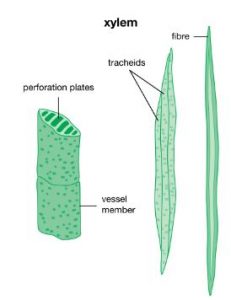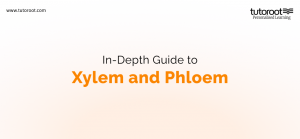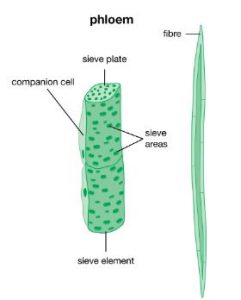In-Depth Guide to Xylem and Phloem
Introduction
Plants are complex organisms with a sophisticated vascular system responsible for the transportation of essential nutrients, water, and other substances throughout their structure. This vascular system is comprised of two critical components: xylem and phloem. Both xylem and phloem play pivotal roles in ensuring the survival and growth of plants. In this article, we will explore the characteristics, functions, and dissimilarities between xylem and phloem.
What is Xylem?
Xylem is a specialized tissue found in vascular plants, primarily responsible for conducting water and dissolved minerals from the roots to the rest of the plant. It consists of several cell types, including tracheids and vessel elements, which form elongated tubes. These tubes create a continuous network, allowing water to travel upwards against gravity from the roots to the leaves and other aerial parts of the plant.
Structure of Xylem

The xylem is composed of four key cell types: tracheids, vessel elements, xylem fibers, and xylem parenchyma. Tracheids and vessel elements are long, tube-like cells with lignified cell walls, forming microscopic channels for water movement. Xylem fibers provide mechanical support to the plant, while xylem parenchyma is involved in the storage of nutrients.
Function of Xylem
The primary function of the xylem is the upward transport of water and dissolved minerals from the roots to the rest of the plant. This process is driven by transpiration, which is the evaporation of water from the plant’s leaves. As water evaporates from the leaves, a negative pressure is created, pulling water up through the xylem vessels due to the cohesive and adhesive properties of water molecules.

What is Phloem?
Phloem, like xylem, is a vital component of a plant’s vascular system. It is responsible for transporting sugars, organic compounds, and other nutrients from the leaves (where they are produced) to other parts of the plant, such as roots, fruits, and seeds. This bidirectional transport system allows for the distribution of essential resources to support various metabolic processes.
The Structure of Phloem

Phloem is composed of four main cell types: sieve tube elements, companion cells, phloem fibers, and phloem parenchyma. The sieve tube elements form the main conducting cells and are connected end-to-end to form sieve tubes. Companion cells play a supporting role and are closely associated with the sieve tube elements, aiding in their metabolic functions.
Function of Phloem
The primary function of the phloem is to transport organic compounds, primarily sugars, produced during photosynthesis in the leaves to other parts of the plant. This process is called translocation and relies on both active and passive mechanisms. Companion cells play a vital role in maintaining the pressure gradient required for the movement of nutrients through the phloem.
Difference Between Xylem and Phloem
Below is a tabulated form outlining the main differences between xylem and phloem:
| Aspect | Xylem | Phloem |
| Function | Transports water and minerals from roots to other plant parts | Transports sugars and organic compounds from leaves to other plant parts |
| Cell Types | Consists of tracheids and vessel elements, which are dead at maturity | Comprises sieve tubes and companion cells, which are living |
| Direction | Conducts unidirectional transport (from roots to aerial parts) | Facilitates bidirectional transport |
| Composition | Thick-walled cells mainly lignified | Thin-walled cells |
| Support Role | Provides structural support to the plant | No structural support role |
Final Verdict
In conclusion, both the xylem and phloem are essential components of a plant’s vascular system, responsible for the transportation of vital substances necessary for growth, development, and survival. Xylem primarily carries water and minerals from the roots to the rest of the plant through a unidirectional flow, while the phloem transports sugars and organic compounds bidirectionally between the leaves and other plant parts. Understanding the distinctions between xylem and phloem helps us appreciate the complexity and adaptability of plants.
We hope that our articles have answered all your questions and brought in more knowledge. Tutoroot is an educational institution that offers online, interactive classes. Click here to book a free demo of our live interactive sessions for NEET online tuition and various message boards.
FAQs
Which cell is not present in the xylem?
The cell type that is not present in the xylem is the “sieve tube element.” Sieve tube elements are specific to phloem and are responsible for transporting sugars.
If the xylem is blocked, which part will die first?
If the xylem is blocked, the aerial parts of the plant, including stems and leaves, will die first. This is because the xylem is responsible for transporting water and minerals, which are essential for the maintenance of plant turgidity and metabolic processes. Without a steady supply of water, the aerial parts of the plant cannot survive.
